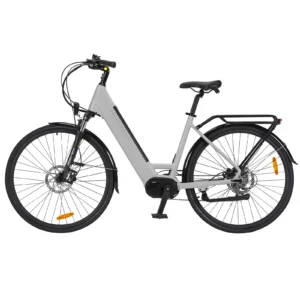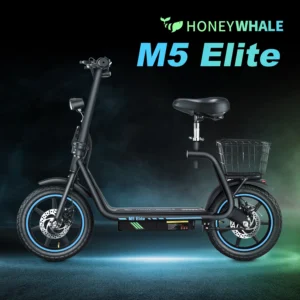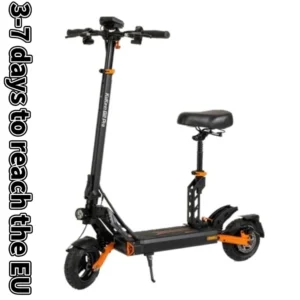Zwischensumme: 2 721,01 €
Elektro gegen Benzin: Der Kampf der Motorräder
The electric motorbike market has witnessed a remarkable surge in popularity over the past decade, driven by a confluence of technological advancements, environmental concerns, and shifting consumer preferences. As urban areas become increasingly congested and pollution levels rise, the demand for sustainable transportation solutions has never been more pressing. Electric motorbikes, with their promise of zero emissions and lower operating costs, have emerged as a viable alternative to traditional gasoline-powered motorcycles.
This transition is not merely a trend; it represents a fundamental shift in how we perceive personal mobility and its impact on the environment. The rise of electric motorbikes is also fueled by innovations in battery technology and electric drivetrains. Manufacturers are now able to produce lighter, more efficient batteries that offer longer ranges and faster charging times.
This technological evolution has made electric motorbikes more appealing to a broader audience, including those who may have previously been hesitant to adopt electric vehicles due to concerns about performance or range anxiety. As a result, the market is witnessing an influx of new models that cater to various riding styles and preferences, from urban commuters to adventure seekers.
Die wichtigsten Erkenntnisse
- Electric motorbikes are gaining popularity due to their environmental benefits and technological advancements.
- Electric motorbikes have lower emissions and are more sustainable compared to traditional gasoline-powered bikes.
- Electric motorbikes offer impressive performance in terms of speed, acceleration, and range, making them a viable option for daily commuting.
- While electric motorbikes may have a higher upfront cost, they require less maintenance and have lower operational costs in the long run.
- The infrastructure and charging network for electric motorbikes are still developing, posing a challenge for widespread adoption.
Environmental Impact: Comparing Emissions and Sustainability
When evaluating the environmental impact of electric motorbikes versus their gasoline counterparts, it is essential to consider the entire lifecycle of the vehicles, from production to disposal. Electric motorbikes produce zero tailpipe emissions, which significantly reduces air pollution in urban environments. According to the International Council on Clean Transportation (ICCT), transitioning to electric two-wheelers could reduce greenhouse gas emissions by up to 50% compared to traditional motorcycles over their lifetime.
This reduction is particularly crucial in densely populated cities where air quality is often compromised by vehicular emissions. However, the sustainability of electric motorbikes extends beyond their operational phase. The production of lithium-ion batteries, which power most electric vehicles, involves mining for raw materials such as lithium, cobalt, and nickel.
These processes can have significant environmental consequences, including habitat destruction and water pollution. Moreover, the recycling of batteries at the end of their life cycle poses additional challenges. Nevertheless, advancements in battery recycling technologies are emerging, aiming to mitigate these issues and enhance the overall sustainability of electric motorbikes.
Companies are increasingly investing in closed-loop systems that allow for the recovery and reuse of valuable materials from spent batteries.
Performance and Power: Speed, Acceleration, and Range

Performance is a critical factor for many motorbike enthusiasts, and electric motorbikes are proving that they can hold their own against traditional models. Electric motors deliver instant torque, resulting in rapid acceleration that can rival or even surpass that of gasoline-powered bikes. For instance, models like the Zero SR/F can accelerate from 0 to 60 mph in just 3.3 seconds, showcasing the impressive performance capabilities of electric drivetrains.
This instantaneous power delivery not only enhances the riding experience but also contributes to improved safety by allowing riders to maneuver quickly in traffic. Range remains a significant consideration for potential electric motorbike buyers. While early models struggled with limited range due to battery constraints, recent advancements have led to substantial improvements.
Many modern electric motorbikes now offer ranges exceeding 100 miles on a single charge, making them suitable for daily commutes and even longer rides. For example, the Harley-Davidson LiveWire boasts a range of approximately 146 miles in the city and 95 miles on the highway. However, it is essential to note that real-world range can vary based on factors such as riding style, terrain, and weather conditions.
As battery technology continues to evolve, we can expect further enhancements in both range and overall performance.
Cost and Maintenance: Analyzing the Financial Differences
| Aspekt | Traditional Building | Green Building |
|---|---|---|
| Initial Construction Cost | 200,000 | 250,000 |
| Energy Efficiency Savings | 10% | 30% |
| Maintenance Cost | 5,000/year | 3,000/year |
| Life Span | 50 years | 75 years |
The financial implications of owning an electric motorbike compared to a traditional gasoline model are multifaceted. Initially, the purchase price of electric motorbikes can be higher due to the cost of advanced battery technology and electric drivetrains. However, this upfront investment is often offset by lower operating costs over time.
Electric motorbikes typically require less maintenance than their gasoline counterparts because they have fewer moving parts and do not require oil changes or complex engine repairs. This simplicity translates into significant savings for owners in terms of maintenance expenses. Moreover, the cost of electricity for charging is generally lower than that of gasoline on a per-mile basis.
According to estimates from the U.S. Department of Energy, charging an electric vehicle can cost about half as much as fueling a gasoline vehicle over the same distance. Additionally, many regions offer incentives such as tax credits or rebates for purchasing electric vehicles, further reducing the overall financial burden on consumers.
As the market matures and production scales up, it is likely that prices for electric motorbikes will continue to decrease, making them more accessible to a wider audience.
Infrastructure and Charging: The Challenges of Electric Motorbikes
Despite the growing popularity of electric motorbikes, challenges related to infrastructure and charging remain significant hurdles for widespread adoption. The availability of charging stations is crucial for alleviating range anxiety among potential buyers. While urban areas are increasingly seeing the installation of public charging stations, rural regions often lack adequate infrastructure, making long-distance travel more challenging for electric motorbike riders.
This disparity can deter potential buyers who may be concerned about finding convenient charging options during their journeys. Furthermore, charging times can vary significantly depending on the type of charger used. Level 1 chargers (standard household outlets) can take several hours to fully charge an electric motorbike, while Level 2 chargers (found at public charging stations) can reduce this time to a couple of hours.
Fast chargers are becoming more common but are still not as widespread as traditional gas stations. The development of a robust charging network is essential for encouraging more riders to make the switch to electric motorbikes and ensuring that existing riders have access to reliable charging options during their travels.
Consumer Preferences: The Shift in Market Trends

Consumer preferences are evolving as awareness of environmental issues grows and technology continues to advance. Younger generations are increasingly prioritizing sustainability in their purchasing decisions, leading to a shift in market trends toward electric vehicles, including motorbikes. Surveys indicate that millennials and Gen Z consumers are more likely to consider electric options when purchasing vehicles due to their environmental benefits and lower operating costs.
Additionally, the appeal of electric motorbikes extends beyond environmental considerations; many riders are drawn to the innovative technology and unique riding experience they offer. The quiet operation of electric motors provides a different sensory experience compared to traditional motorcycles, allowing riders to enjoy their surroundings without the noise pollution associated with internal combustion engines. This shift in consumer preferences is prompting manufacturers to invest heavily in research and development for electric models that cater to diverse riding styles and preferences.
Government Policies and Incentives: The Impact on the Industry
Government policies play a pivotal role in shaping the landscape of the electric motorbike industry. Many countries are implementing regulations aimed at reducing carbon emissions and promoting sustainable transportation solutions. These policies often include incentives such as tax credits, rebates, or grants for consumers who purchase electric vehicles.
For instance, in California, buyers of electric motorcycles can receive rebates up to $1,500 through state programs designed to encourage clean transportation. Moreover, some governments are setting ambitious targets for phasing out gasoline-powered vehicles altogether. The European Union has proposed plans to ban the sale of new internal combustion engine vehicles by 2035, which would significantly accelerate the transition toward electric mobility across member states.
Such policies not only stimulate demand for electric motorbikes but also encourage manufacturers to invest in developing new technologies that meet stricter emissions standards.
The Future of Motorbikes: Predicting the Dominant Technology
As we look toward the future of motorbikes, it is clear that electric technology will play an increasingly dominant role in shaping the industry landscape. With ongoing advancements in battery technology promising longer ranges and faster charging times, electric motorbikes are poised to become more practical for a broader range of consumers. Additionally, as infrastructure continues to improve with more charging stations being installed globally, concerns about range anxiety will diminish.
Furthermore, innovations such as swappable battery systems could revolutionize how riders approach charging their bikes. Companies like Gogoro have already implemented battery-swapping stations for scooters in urban areas, allowing riders to quickly exchange depleted batteries for fully charged ones within minutes. This model could be adapted for larger electric motorcycles as well.
In conclusion, while challenges remain in terms of infrastructure and initial costs, the trajectory toward widespread adoption of electric motorbikes appears promising. As consumer preferences shift toward sustainability and governments implement supportive policies, we can expect electric motorbikes to become an integral part of our transportation ecosystem in the years ahead.
FAQs
What are the main differences between an electric motorbike and a gasoline motorbike?
The main differences between an electric motorbike and a gasoline motorbike are the type of fuel they use, the way they are powered, and their environmental impact. Electric motorbikes are powered by electricity and have no emissions, while gasoline motorbikes are powered by gasoline and produce emissions.
Which type of motorbike is more environmentally friendly?
Electric motorbikes are more environmentally friendly than gasoline motorbikes. They produce no emissions during operation, while gasoline motorbikes produce carbon dioxide and other pollutants.
What are the advantages of an electric motorbike over a gasoline motorbike?
Some advantages of electric motorbikes over gasoline motorbikes include lower operating costs, quieter operation, and lower maintenance requirements. Electric motorbikes also have instant torque and can be charged at home.
What are the advantages of a gasoline motorbike over an electric motorbike?
Gasoline motorbikes have a longer range and quicker refueling times compared to electric motorbikes. They are also more widely available and have a well-established infrastructure for refueling.
Which type of motorbike is more cost-effective in the long run?
Electric motorbikes are generally more cost-effective in the long run due to lower operating costs and maintenance requirements. However, the initial purchase price of an electric motorbike may be higher than that of a gasoline motorbike.
Are there any limitations to electric motorbikes compared to gasoline motorbikes?
One limitation of electric motorbikes compared to gasoline motorbikes is their range, as electric motorbikes typically have a shorter range per charge. Additionally, the availability of charging infrastructure for electric motorbikes may be limited in some areas.

 Elektrofahrrad 700C 29 Zoll Trekkingrad E-Citybike mit 43V 12Ah Lithiumbatterie für große Reichweite bis zu 100 KM, 250 W Motor
Elektrofahrrad 700C 29 Zoll Trekkingrad E-Citybike mit 43V 12Ah Lithiumbatterie für große Reichweite bis zu 100 KM, 250 W Motor  HONEYWHALE M5 Elite Elektroroller für Erwachsene mit Sitz, Peak 750-W-Motor, 45 km maximale Reichweite, 40 km/h, 14-Zoll-Reifen, 48-V-13-Ah-Batterie, EScooter
HONEYWHALE M5 Elite Elektroroller für Erwachsene mit Sitz, Peak 750-W-Motor, 45 km maximale Reichweite, 40 km/h, 14-Zoll-Reifen, 48-V-13-Ah-Batterie, EScooter  Kukirin G2 Pro 600 W 48 V 15,6 Ah 45 km/h 60–80 km 9 Zoll faltbarer Elektroroller
Kukirin G2 Pro 600 W 48 V 15,6 Ah 45 km/h 60–80 km 9 Zoll faltbarer Elektroroller 